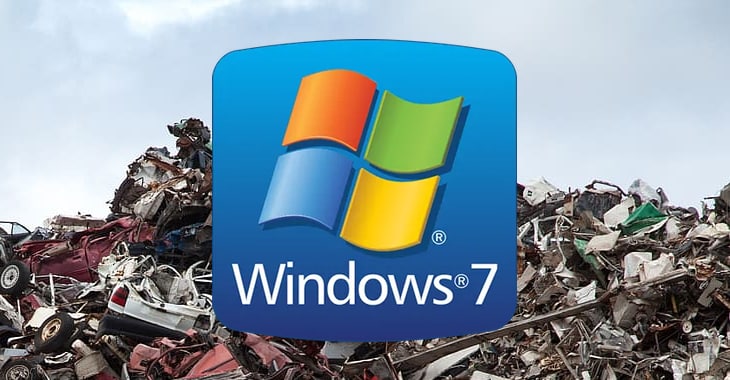
Blog / Too Many People Are Still Using Windows 7… Why it’s Very Unwise to be Doing This.
Windows 7 has been with us for a long time. Now it has been supplanted by Windows 10. At the same time, no it hasn’t. Making sure your computers remain on a supported operating system are just as important as replacing broken equipment or upgrading old hardware. Operating system end-of-life is a real thing and Microsoft was making the date very public for a very long time. No outfit can have a valid excuse for this to suddenly come as a total surprise.
Windows 7 is rather unique, as far as Microsoft operating systems go. In general terms, it is no longer supported and will not receive further Security Updates. That is, unless you pay for extended support. For the next three years, Microsoft will continue to provide you with Security Updates, IF you pay a price.
So, why is it that not receiving Windows 7 updates is such a big deal?
Well, let’s look at the real world of operating system usage for a moment:
Researching around the Internet, it’s easy to find numbers and statistics for what operating systems are being used. As of January 2020, there are approx. 200 million PCs around the world using old/outdated operating systems. Most of them run Windows 7. About 40% of all consumers are still running Windows 7 and at least 60% of all enterprises still have Windows 7 machines functioning in their network!
This means that it is still perfectly reasonable for cyber attackers to focus their efforts on compromising Windows 7 devices. After all, there are more than enough devices out there that can garner solid returns on their hacking endeavours.
Now add to this the fact that most of those consumers are unlikely to pay for extended support. Also, consider that a percentage of those businesses will not be receiving updates and it adds up to a lot of Windows 7 machines that will start to go the non-patched route, yet still remain in active use.
The next question then is: Why is reverse-engineering patches for Windows 7 a big deal?
Well, let me tell you about something that is happening right now: There are people who make their living (for better or for worse) by finding holes in software. You can either find them yourself (this takes a huge amount of work and in-depth knowledge) or use a third party to do it for you, which is ever so much easier. That’s a winner in anyone’s books.
To tie all this into updates for Windows 7, something that can be done is examine the update itself, to see what sort of changes it makes to the operating system. Doing this is not difficult and doesn’t require special or expensive software or hardware. It goes on all the time and people read that update very closely, to find possible exploits. They then work to weaponize them as quickly as possible to try and catch people before they update their machines.
Now then, the situation we have is that updates will continue to happen, yet there is going to be a large number of computers available that will not receive any updates at all. To add some icing onto this cake, the situation will continue for the next three years. Windows 7 is not unique, as Microsoft allows people to pay for extended updates, after the official end-of-life date. What makes Windows 7 different is the shear volume of devices still using it, which is one in every five users. That’s too many. Time to move on!
Considering this situation, I really can’t stress strongly enough that all Windows 7 machines should be upgraded as soon as possible. Honestly, the upgrade process should have finished at least six months ago. Going forward, having a Windows 7 machine in your network that is not receiving updates, is a liability; a detriment to your Security.
Ideally I’d say that if you’ve got a Windows 7 machine that isn’t getting updates, you should totally remove it from you network. No Internet or network access of any sort. If that’s not an option, then at least treat it like an IoT device and make sure the network access it has is as limited as possible. These are only interim measures, as the priority should be to either upgrade to a supported operating system (Windows 10) or replace the computer entirely.
Windows 7 may be dead, but there are too many people out there who don’t think, realize or know so! The sad truth of the matter is that, just like the much-beloved Windows XP from two generations before it, people (very unwisely) still can’t seem to let go of Windows 7!
If you have any questions about upgrading Windows 7, please reach out to your TRINUS Account Manager for some stress-free IT.
By Kind Courtesy of Your Friendly Neighbourhood Cyber-Man.

















